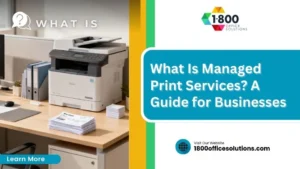What Is Risk Management? Understanding Its Importance and Benefits
Risk management is essential for businesses, yet many do not recognize its importance until they face a crisis. Recent statistics indicate that organizations with a structured risk management program are 60% more likely to succeed in navigating challenges. This article will define risk management, discuss its significance, and outline the benefits it offers. Readers will gain a clearer understanding of risk management strategies, including key components from ISO 31000:2018. By addressing common pain points, such as uncertainty in decision-making or gaps in health insurance coverage, this content aims to equip business owners with effective tools for improving their overall risk management practices.
Key Takeaways
- Effective risk management enhances organizational resilience against unexpected challenges and disruptions
- Engaging stakeholders fosters informed decision-making and strengthens trust within the organization
- Comprehensive training programs promote awareness and identify vulnerabilities, bolstering data security practices
- Utilizing structured frameworks allows organizations to systematically assess and manage diverse types of risks
- Proactive measures in risk management support long-term sustainability and competitiveness in a dynamic environment
What Is Risk Management?

Risk management involves identifying, assessing, and prioritizing risks to minimize their impact on organizational objectives. The role of a chief risk officer is pivotal in overseeing this process, supported by principles of data governance. Understanding its historical background reveals common misconceptions, such as conflating risk management with opportunity loss. This section will explore these critical aspects and their significance within the community.
Definition and Key Concepts
Risk management is a systematic approach that organizations utilize to identify, assess, and prioritize risks that may impact their objectives. This process is often guided by a risk management committee that establishes a framework for evaluating potential risks across various domains, including physical property and brand reputation. By employing effective valuation techniques, businesses can quantify risks and make informed decisions that safeguard their assets and enhance overall resilience.
Understanding risk management also involves recognizing its critical elements, such as the development of a comprehensive risk management system. This system incorporates processes and tools designed to monitor and mitigate risks proactively. For instance, companies may implement risk assessments to ensure that their property is adequately protected against unforeseen events, which can improve their operational stability and foster stakeholder trust.
Historical Background of Risk Management
The historical background of risk management can be traced back to ancient civilizations where early forms of assessing vulnerability existed, particularly in relation to trade and investments. In modern corporate finance, the rise of regulatory compliance has driven organizations to adopt more structured risk management practices, ensuring they navigate potential threats while enhancing operational efficiency. This evolution reflects a growing recognition of risk management as a vital tool in safeguarding assets and improving decision-making within businesses.
Common Misconceptions
One common misconception about risk management is that it solely focuses on financial statement accuracy and risk avoidance rather than promoting a culture of ethics and confidence within an organization. Many professionals overlook the vast benefits that a robust risk management framework provides, such as strengthening stakeholder trust through transparent practices. Recognizing that risk management transcends beyond mere compliance is essential to fostering a proactive approach that incorporates ethical considerations in decision-making processes.
Another prevalent myth is that risk management is primarily concerned with credit risk and financial losses. This narrow view neglects the importance of addressing various operational risks that can impact an organization’s overall performance and reputation. By adopting a comprehensive risk management strategy, organizations can cultivate a culture tailored to identify and mitigate diverse risks, ensuring long-term sustainability and resilience in an unpredictable business landscape.
Why Is Risk Management Significant?

Risk management plays a critical role in enhancing organizational resilience, fostering informed decision-making, and protecting assets and resources. By integrating practices like business continuity planning and utilizing cloud computing techniques, companies can effectively minimize disruptions and safeguard stakeholder interests. The following sections will delve into each of these aspects, illustrating their significant contributions to a proactive risk management strategy.
Enhancing Organizational Resilience
Enhancing organizational resilience is a crucial aspect of effective risk management. A well-structured strategy that incorporates consistent evaluation of threats allows organizations to adapt swiftly to changes within their environment. By recognizing risks early through frameworks like the NIST Cybersecurity Framework, businesses can implement proactive measures that lead to sustained operational continuity and minimized disruptions.
Moreover, a resilient organization is better equipped to handle unexpected challenges, fostering a culture of preparedness within society. Implementing comprehensive risk management concepts ensures that every facet of an entity is considered, from physical assets to reputational elements, ultimately leading to improved stakeholder confidence and long-term success. This holistic approach empowers businesses to not only survive potential risks but also thrive in the face of adversity:
Fostering Informed Decision-Making
Fostering informed decision-making is a central benefit of effective risk management. By providing transparency into potential risks, including financial impacts from natural disasters or workplace injuries, organizations can make choices that align with their objectives while prioritizing the safety and well-being of their stakeholders. For instance, a company that assesses the risk of natural disasters can develop appropriate contingency plans, thereby ensuring that operations remain stable during critical situations.
The integration of risk mitigation strategies into the decision-making process allows businesses to evaluate the financial implications of their operations comprehensively. Organizations that adopt this proactive approach can better understand the risks they face, leading to improved resource allocation and enhanced overall resilience. By emphasizing informed decision-making, companies can create a culture of accountability and responsiveness that ultimately strengthens their competitiveness in the market.
Protecting Assets and Resources
Protecting assets and resources is a fundamental aspect of a comprehensive risk management framework within a corporation. By adopting a structured methodology, businesses can better identify potential threats that could impact their financial stability and operational continuity, especially during challenging times such as a pandemic. An effective approach ensures that corporations allocate appropriate attention to safeguarding their physical and digital assets, which is essential for long-term success.
Moreover, a robust risk management framework equips organizations to respond swiftly to unforeseen events, minimizing disruptions and safeguarding vital resources. For instance, companies can employ risk assessment tools to evaluate vulnerabilities related to supply chain interruptions or data breaches, allowing them to develop strategies that mitigate potential losses. Ultimately, this proactive stance not only protects assets but also fosters a culture of preparedness and resilience, essential for thriving in today’s dynamic business environment.
Benefits of Effective Risk Management

Effective risk management offers numerous benefits to organizations, including minimizing financial losses and preserving reputation and trust. By adhering to legal and regulatory standards, businesses can promote operational efficiency and reduce potential legal liability. Additionally, organizations can encourage innovation and growth by fostering an environment that supports informed decision-making. Each of these aspects contributes significantly to a company’s long-term sustainability and competitiveness.
Minimizing Financial Losses
Minimizing financial losses is a critical aspect of effective risk management, ensuring organizations have the necessary safeguards in place against unforeseen events. By implementing strategies that include a robust insurance policy, businesses can mitigate the financial impact of incidents that may arise during project management or stem from human resources-related issues. For instance, having an insurance policy tailored to specific needs can provide financial security during unexpected disruptions, safeguarding against potential losses.
Additionally, adherence to standards such as ISO TR24971 enables organizations to systematically identify and evaluate risks, leading to informed decision-making. This structured approach helps engineers and project managers better navigate challenges, ultimately reducing the likelihood of costly delays or incidents. Through proactive risk management practices, companies can enhance their financial resilience and support sustainable growth in a competitive business landscape:
Preserving Reputation and Trust
Preserving reputation and trust is integral to effective risk management, as organizations face numerous complexities in today’s business environment. By implementing robust vendor risk management practices, companies can mitigate potential threats that may arise from third-party relationships. Establishing a framework aligned with the Committee of Sponsoring Organizations of the Treadway Commission (COSO) enables businesses to evaluate these relationships comprehensively, ensuring that they manage risks effectively while maintaining stakeholder confidence.
Moreover, fostering a transparent communication strategy reinforces trust with clients and partners alike. Companies that utilize solutions from industry leaders like IBM can develop tailored risk management frameworks that address specific challenges related to their budgets and operational needs. This proactive approach not only protects brand reputation but also cultivates an atmosphere of accountability, driving long-term success in a competitive marketplace.
Promoting Operational Efficiency
Promoting operational efficiency is a significant advantage of effective risk management, particularly when organizations implement practices aligned with standards such as ISO 14971. By integrating risk management frameworks into software development processes, companies can identify potential obstacles early and streamline their operations. This proactive stance not only enhances productivity but also minimizes disruptions that could negatively affect business sustainability.
Furthermore, utilizing databases to track risk management activities allows organizations to analyze trends and refine their strategies continuously. With extensive experience in managing risks, companies can create tailored solutions that address specific operational challenges. This results in more efficient workflows and the ability to adapt swiftly to changing market conditions, ultimately contributing to improved organizational performance and long-term success.
Encouraging Innovation and Growth
Effective risk management plays a vital role in encouraging innovation and growth within organizations. By identifying potential risks associated with new investments, businesses can develop strategies that minimize failure while maximizing the potential of innovative projects. This proactive approach allows companies to allocate their resources more effectively, facilitating the pursuit of new ideas while ensuring they have a safety net in place.
Moreover, adherence to the International Organization for Standardization (ISO) standards reinforces this process. By integrating standardized management practices, organizations can systematically assess risks in their innovation processes. This not only fosters a culture of continuous improvement but also builds the confidence of stakeholders, enabling businesses to embrace new opportunities that drive growth and sustainability.
Components of the Risk Management Process

Identifying potential risks is the first step in the risk management process, followed by assessing the impact and likelihood of these risks on organizational objectives. Developing risk mitigation strategies is crucial for addressing vulnerabilities, while implementing and monitoring these plans ensures continuous governance and learning. Utilizing frameworks like ISO 24971, organizations can enhance information security and effectively manage supply chain risks, ultimately driving resilience and sustainability.
Identifying Potential Risks
Identifying potential risks is a foundational element of the risk management process, crucial for organizations looking to mitigate threats effectively. This step involves a thorough assessment of both internal and external environments to uncover vulnerabilities that could lead to disaster. Businesses must engage their chief information officer to leverage data and analytical tools that can highlight operational risks, paving the way for strategic management that prioritizes resilience.
Implementing a structured approach to identifying risks allows organizations to address potential challenges before they escalate. By utilizing techniques such as risk assessments and scenario analysis, companies can pinpoint critical areas requiring attention. This proactive strategy not only protects resources but also supports informed decision-making across departments, thereby reinforcing the organization’s ability to navigate uncertainties.
- Assessment of internal and external environments
- Engagement of the chief information officer for data analysis
- Identification of operational risks leading to disaster
- Utilization of risk assessments and scenario analysis
- Support for strategic management and informed decision-making
Assessing Risk Impact and Likelihood
Assessing risk impact and likelihood is crucial for risk professionals as it provides a clear understanding of how potential hazards can affect an organization’s operations and objectives. By effectively evaluating these factors, businesses can prioritize their risk management efforts, ensuring efficient allocation of resources. For example, in the mortgage industry, assessing the likelihood of property hazards such as flooding can inform lenders about potential financial liabilities and influence their lending decisions.
This systematic assessment involves examining both the scope of each risk and its potential consequences. Organizations can leverage data analytics tools to quantify risks and gauge their severity, which enhances decision-making processes. By identifying significant risks early, companies can establish a proactive risk management approach that ensures operational stability and raises stakeholder confidence:
Developing Risk Mitigation Strategies
Developing risk mitigation strategies involves creating tailored approaches that specifically address potential threats to an organization’s operations and assets. By incorporating tools such as artificial intelligence, organizations can analyze data trends and identify vulnerabilities more effectively. For example, companies engaged in remote work can implement automated monitoring systems to detect anomalies, safeguarding their digital infrastructure while ensuring minimal disruption to business processes.
Outsourcing specific risk management functions can also be beneficial for organizations looking to enhance their strategy. By collaborating with specialized firms, businesses can leverage external expertise to navigate customs regulations and compliance issues that may arise. This proactive approach not only streamlines operations but also reinforces an organization’s resilience by allowing it to focus on core activities while effectively managing risks associated with external challenges.
Implementing and Monitoring Risk Plans
Implementing and monitoring risk plans involves a structured approach that allows organizations to effectively respond to potential threats while aligning actions with their established risk appetite. This process often includes using technological tools that provide vital information about vulnerabilities, enabling businesses to track risks in real time. Companies can benefit from standards set by organizations like the American National Standards Institute, which guides the creation of robust risk management frameworks and practices.
Monitoring these plans ensures that businesses can adapt to new challenges and changes in the environment. By engaging in regular reviews and updates, companies can assess their strategies and determine the need for adjustments, including considerations for reinsurance to mitigate specific risks. This continuous evaluation not only enhances resilience but also fosters a proactive culture that positions organizations for long-term success in a complex risk landscape.
Types of Risks Addressed by Risk Management

Risk management encompasses various types of risks critical to organizational success. Financial risks relate to potential monetary losses that affect profit and investment returns. Operational risks arise from internal processes and technology impacts on productivity. Strategic risks involve challenges to long-term goals, while compliance risks address regulatory adherence. Each of these categories provides essential insights for enhancing business intelligence and standardization within organizations.
By understanding these risk types, organizations can develop tailored strategies that effectively safeguard their assets and ensure operational resilience in a dynamic business environment.
Financial Risks
Financial risks pose significant challenges to organizations and require effective enterprise risk management strategies to mitigate them. These risks can arise from various sources, including market fluctuations, climate change impacts, and potential fraud. Businesses must employ robust hazard analysis techniques to identify vulnerabilities within their financial operations and safeguard against potential monetary losses that could jeopardize their stability.
Utilizing the project management body of knowledge (PMBOK) framework can help organizations structure their approach to managing financial risks effectively. By integrating comprehensive risk assessment practices into project planning, stakeholders are better equipped to identify potential financial pitfalls early in the process. This proactive stance not only protects assets but also fosters a resilient organizational culture capable of responding to unpredictable financial challenges:
Operational Risks
Operational risks are inherent within any organization, arising from internal processes, systems, and human factors. These risks can manifest in various forms, such as data breaches, which can compromise sensitive information and disrupt operations significantly. Maintaining a robust framework, such as ISO 31000, helps organizations identify the root causes of these risks while implementing effective strategies to mitigate their impact on overall productivity and security.
Moreover, external factors such as climate change can also contribute to operational risks. Organizations should leverage advanced risk management software to analyze potential vulnerabilities and develop contingency plans that address both internal shortcomings and external threats. By prioritizing operational risk management, businesses can ensure resilience against unforeseen disruptions, safeguarding their assets and sustaining long-term growth:
- Identification of internal process weaknesses
- Addressing data breaches and their implications
- Utilizing ISO 31000 for structured risk assessment
- Incorporating climate-related considerations
- Implementing risk management software for continuous monitoring
Strategic Risks
Strategic risks pose significant challenges for organizations, as they are linked to long-term objectives and leadership decisions. These risks can arise from market trends, shifts in consumer behavior, and potential cyberattacks that threaten operational integrity. For instance, companies must design robust supply chain risk management strategies that consider not only current market conditions but also global uncertainties, ensuring that they remain resilient against disruptions.
Addressing strategic risks requires a proactive approach to decision-making, prioritizing risk assessment alongside business growth initiatives. Organizations can mitigate financial risk by evaluating their market position and adjusting strategies accordingly. This includes engaging in continuous analysis of potential threats, allowing leaders to adapt their designs and frameworks to build a sustainable, secure future in an increasingly complex business environment.
Compliance Risks
Compliance risks represent a significant category within risk management, reflecting the potential issues organizations face in adhering to laws, regulations, and industry standards. With increasing scrutiny from regulators and stakeholders, organizations must proactively manage these uncertainties to avoid legal penalties and reputational damage. Adopting frameworks such as those set forth by the National Institute of Standards and Technology (NIST) and ISO TR 24971 can help organizations establish effective compliance programs that align with industry best practices.
Furthermore, managing compliance risks requires organizations to maintain comprehensive documentation and regular audits of their operations. This structured approach can reveal gaps in compliance practices and ensure that necessary improvements are made promptly. By promoting a culture of compliance, organizations can foster trust among stakeholders and create a more resilient operational environment, ultimately safeguarding their interests and increasing long-term sustainability:
- Understanding compliance risks within risk management
- Proactive management to avoid legal penalties
- Utilizing standards like NIST and ISO TR 24971
- Maintaining thorough documentation and regular audits
- Building a culture of compliance for long-term sustainability
Best Practices for Successful Risk Management

Engaging stakeholders is vital for successful risk management, as their input enhances workflows and identifies potential cybersecurity risks. Continuous monitoring and improvement ensure that strategies adapt to new challenges, while training and awareness programs equip employees to recognize and respond to possible accidents. Each of these practices strengthens an organization’s resilience against unforeseen events.
Engaging Stakeholders
Engaging stakeholders is essential for effective risk management, as their involvement can significantly enhance decision-making processes. By fostering open communication, organizations can collect valuable insights that inform risk management strategies, ensuring alignment with the broader objectives such as quality management and operational efficiency. Moreover, utilizing risk management tools that allow stakeholders to share their perspectives strengthens the overall approach to identifying and addressing potential threats.
In addition to active participation, organizations should consider integrating stakeholder feedback into their configuration management processes. This not only ensures that risk management frameworks are well-rounded but also builds trust among stakeholders when they see their input reflected in crucial decisions. A well-engaged stakeholder community helps maintain a balanced assessment of risks impacting the balance sheet, contributing to long-term organizational stability and success:
- Foster open communication with stakeholders.
- Utilize risk management tools for collaborative insights.
- Integrate feedback into configuration management.
- Build stakeholder trust to enhance decision-making.
- Support a balanced assessment of risks impacting the balance sheet.
Continuous Monitoring and Improvement
Continuous monitoring and improvement are vital components of effective risk management, enabling organizations to adapt to ever-changing circumstances. By regularly conducting risk assessments, businesses can evaluate the effectiveness of their policies and ensure that they align with their risk appetite. This proactive approach facilitates informed resource allocation and supports project risk management efforts, ensuring that potential threats are addressed before they escalate into significant issues.
Implementing a structured framework for continuous monitoring allows organizations to track the efficiency of their risk strategies over time. For example, firms can utilize advanced analytics tools to collect data on risk events and integrate feedback from stakeholders, refining their policies to enhance overall performance. By fostering a culture of continuous improvement, organizations not only bolster their resilience but also empower teams to navigate risks effectively and maintain long-term sustainability:
- Regular risk assessments to evaluate policy effectiveness.
- Informed resource allocation to address potential threats.
- Utilization of advanced analytics for tracking risk events.
- Integration of stakeholder feedback for policy refinement.
- Cultivating a culture of continuous improvement for resilience.
Training and Awareness Programs
Training and awareness programs are essential in promoting data security within organizations. These initiatives not only educate employees about potential risks but also provide practical insights on how to identify vulnerabilities in software and systems. For example, integrating training on root cause analysis enables staff to recognize underlying issues that can lead to security breaches, thus fostering a proactive approach to risk management.
Moreover, effective education on mergers and acquisitions is critical for preparing teams to navigate the complexities associated with integrating new systems and processes. Through comprehensive training, organizations can ensure that their workforce is equipped with the knowledge needed to identify risks during these transitions, ultimately enhancing their overall risk management strategy. Continuous awareness efforts create a culture of security that empowers employees to safeguard the organization’s assets.
Real-World Examples of Risk Management Applications

Case studies in financial services illustrate how robust internal audit processes prevent financial mismanagement and protect against reputational damage. In healthcare, effective risk management strategies enhance patient safety and prepare for potential water damage incidents. Meanwhile, technology firms employ risk assessments to mitigate vulnerabilities, supporting their operational frameworks and ensuring continued innovation and compliance through meticulous research.
Case Studies in Financial Services
In the financial services sector, organizations increasingly emphasize the importance of risk management to safeguard their assets and maintain operational integrity. For example, banks operating within the European Union adhere to strict standards set by regulatory bodies to align their risk appetite with comprehensive risk management frameworks. This alignment not only enhances financial intelligence but also ensures that necessary protocols are in place for addressing potential vulnerabilities, ultimately fostering trust among stakeholders.
Moreover, effective risk management practices in financial institutions have been instrumental in promoting health within the organization by establishing clear policies for identifying and mitigating risks associated with credit, market fluctuations, and compliance requirements. These organizations often engage with standards organizations to create guidelines that facilitate internal audits and assessments, allowing them to respond proactively to emerging threats and ensure sustained operational success.
Risk Management in Healthcare
The healthcare sector faces numerous risks, including market risk associated with fluctuating patient volumes and regulatory compliance. Effective risk management strategies in healthcare organizations often involve comprehensive insurance policies designed to provide indemnity for potential liabilities, safeguarding both medical practices and patient welfare. For instance, many hospitals utilize risk assessments to evaluate their exposure to various credit risks linked to billing and reimbursement processes, ensuring that they can navigate financial uncertainties effectively.
In addition to addressing financial uncertainties, risk management in healthcare incorporates proactive measures to enhance patient safety and operational efficiency. Facilities may implement quality assurance programs to monitor clinical practices and prevent adverse events, thereby protecting their reputation and maintaining trust with stakeholders. The following list outlines key components of successful risk management applications in healthcare:
- Comprehensive insurance policies for liability coverage.
- Risk assessments to identify credit risks in billing processes.
- Quality assurance programs aimed at enhancing patient safety.
- Proactive measures for regulatory compliance and operational efficiency.
Risk Strategies for Technology Firms
Technology firms face unique challenges in cybersecurity risk management, making it essential for them to establish robust risk strategies. Implementing a comprehensive approach throughout the systems development life cycle allows these organizations to identify and mitigate risks early in the process. By actively engaging with the chief financial officer and other stakeholders, they can ensure that the cost associated with risk management aligns with organizational objectives while protecting valuable assets from threats.
To strengthen their cybersecurity posture, technology firms often adopt a proactive risk management approach that includes continuous monitoring and assessment of emerging vulnerabilities. By fostering a culture of awareness and establishing clear communication channels, they can encourage teams to recognize and address potential issues effectively. This commitment to risk strategies not only promotes operational resilience but also contributes to a sustainable business model that supports innovation and growth.
Future Trends in Risk Management

Technology is playing an increasingly pivotal role in risk management, driving innovation in areas such as contract management and enhancing the utility of a risk matrix for systematic assessments. Evolving regulatory landscapes require adaptable risk management strategies that include effective risk communication. Furthermore, adept management of IT risks is essential for controlling expenses and maintaining a secure operational environment. Each of these elements is critical for fostering robust risk management practices that support organizational resilience.
The Role of Technology in Risk Management
Technology serves as a crucial ally in risk management by enhancing the ability of organizations to safeguard their reputation through proactive measures. For instance, incorporating standards like ISO 27005 allows firms to develop comprehensive risk assessment frameworks that identify potential vulnerabilities related to data security and operational integrity. This structured approach not only mitigates risks but also reinforces the importance of occupational safety and health, ensuring that employees operate in secure environments.
Moreover, leveraging technology enables chief executive officers to streamline audit processes, facilitating improved oversight of risk management strategies. By utilizing advanced data analytics and reporting tools, organizations can gain deeper insights into risk factors, allowing them to make informed decisions that align with both compliance obligations and business objectives. This proactive engagement fosters a culture of continuous improvement, helping businesses navigate uncertainties while retaining stakeholder trust and confidence.
Evolving Regulatory Landscapes
The evolving regulatory landscapes necessitate that organizations remain vigilant in adapting their risk management frameworks to comply with new requirements. As standards become more stringent, the board of directors must ensure that risk management practices align with the latest international standards, facilitating a more comprehensive approach to overseeing vendor risks. Utilizing analytics to interpret regulatory changes can help organizations strategically adjust their risk matrices, allowing them to better anticipate compliance challenges.
Organizations must proactively enhance their risk management processes to navigate these evolving landscapes effectively. By integrating advanced analytics, firms can analyze data related to regulatory developments, enabling them to make informed decisions and maintain operational resilience. This proactive approach not only mitigates risks associated with compliance but also fosters a culture that prioritizes accountability and transparency throughout the organization.
Adaptive Risk Management Strategies
Adaptive risk management strategies are essential for organizations seeking to remain agile in the face of continuously evolving threats. By utilizing real-time data analytics and flexible frameworks, businesses can proactively adjust their risk responses to reflect changing conditions. This adaptability not only enhances an organization’s resilience but also boosts its ability to capitalize on emerging opportunities, ensuring sustained competitive advantage.
In practice, companies can employ methods such as scenario planning and stress testing to evaluate their risk exposure under various circumstances. This approach allows firms to identify potential vulnerabilities and adjust their strategies accordingly, fostering a culture of continuous improvement. By actively engaging with risk management processes, organizations can effectively mitigate losses and protect their assets in a rapidly changing business landscape:
- Utilizing real-time data analytics for swift adjustments
- Implementing scenario planning to evaluate potential risks
- Fostering a culture of continuous improvement in risk management
- Engaging with adaptive strategies for competitive advantage
Frequently Asked Questions
What are the key elements of risk management?
Risk management involves identifying, assessing, and prioritizing risks to minimize their impact on an organization. Key elements include risk identification, where potential threats are recognized, and risk analysis, assessing the likelihood and potential consequences of those risks.
Effective risk management also includes risk mitigation strategies, which outline responses to potential issues, and monitoring. Regularly reviewing risk management practices ensures that risk response plans remain relevant and effective, safeguarding business continuity and operations.
Why is risk management crucial for businesses?
Risk management is essential for businesses as it helps identify, assess, and mitigate potential threats. By implementing effective risk management strategies, organizations can safeguard their assets, ensure compliance, and enhance decision-making processes. This proactive approach ultimately fosters sustainability and growth.
Moreover, effective risk management promotes stakeholder confidence and protects a company’s reputation. By addressing vulnerabilities, businesses can minimize financial losses and ensure operational continuity. Comprehensive risk analyses also enable organizations to adapt to market changes, making them more resilient in a competitive landscape.
What types of risks can be managed effectively?
Effective risk management encompasses various types of threats, including operational, financial, and cybersecurity risks. Businesses can implement strategies such as risk assessment, employee training, and technology upgrades to mitigate these risks and ensure stability.
Furthermore, regulatory and reputational risks also require attention. Establishing compliance programs and maintaining transparent communication with stakeholders can significantly reduce the likelihood of these risks impacting the organization’s success.
What are some best practices in risk management?
Effective risk management begins with identifying potential risks that could impact operations. Regularly assessing both internal and external factors helps companies mitigate losses. Ensuring clear communication channels also fosters a proactive approach, allowing teams to address risks swiftly and reduce overall impact.
Another best practice is to implement a risk assessment framework tailored to the organization’s structure. This framework should prioritize risks based on their likelihood and potential consequences. Continuous monitoring and review ensure that risk management strategies evolve alongside changing business environments, ultimately safeguarding the organization.
How is risk management evolving with future trends?
Risk management is adapting through the integration of technology and data analytics. Businesses are increasingly leveraging artificial intelligence to predict and mitigate potential risks. This shift promotes proactive strategies tailored to unique operational landscapes, ensuring resilience against emerging threats.
Moreover, evolving regulatory frameworks are influencing risk management practices. Organizations are prioritizing compliance and transparency, aligning risk management with corporate governance. As environmental, social, and governance (ESG) factors gain prominence, companies incorporate these criteria into their risk assessments, reinforcing sustainable practices.
Conclusion
Risk management plays a vital role in strengthening organizational resilience by identifying, assessing, and mitigating potential threats. Through effective risk management practices, businesses can foster informed decision-making, protect their assets, and build stakeholder confidence. Embracing a comprehensive approach not only minimizes financial losses but also enhances operational efficiency and drives innovation. Understanding the significance of risk management empowers organizations to navigate uncertainties confidently and sustain long-term success.











